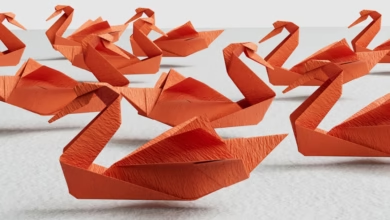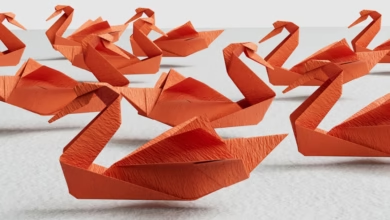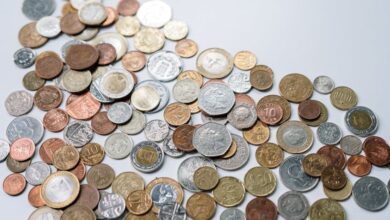Metals in Motion: Navigating Industrial Demand, Investment Trends, and the Green Energy Revolution

In today's rapidly evolving economic landscape, the role of metals extends far beyond their traditional uses, influencing both industrial applications and investment strategies. From the reflective sheen of silver, which serves not only as a precious metal but also as a critical component in various technologies, to the fluctuating prices of copper that serve as barometers for global economic health, the interplay between these materials and the broader market is both complex and fascinating. As the world pivots towards sustainable energy solutions, the demand for rare earth metals has surged, highlighting their significance in green technologies. This article delves into the multifaceted roles of metals, examining silver's unique position, the economic implications of copper pricing, and the burgeoning market for rare earths. Additionally, we will explore the investment potential of platinum versus palladium, the importance of metals in portfolio diversification, the effects of inflation on metal prices, the future of aluminum in a sustainable economy, and the impact of mining regulations on market dynamics. Join us as we uncover the intricate connections between these essential materials and their influence on both industry and investment.
- 1. "Silver's Dual Function: Industrial Applications and Investment Opportunities"
- 2. "Copper Prices as Economic Indicators: Analyzing Global Market Trends"
- 3. "Rare Earth Metals in the Green Revolution: Demand Dynamics and Future Prospects"
1. "Silver's Dual Function: Industrial Applications and Investment Opportunities"
Silver plays a unique and multifaceted role in both industrial applications and as an investment vehicle, making it a vital metal in today's economy. On the industrial side, silver is renowned for its excellent conductivity, thermal properties, and reflective capabilities. These characteristics enable its use in various applications, ranging from electronics, where it is used in circuit boards and conductive coatings, to solar energy, where it is a key component in photovoltaic cells. The demand for silver in these sectors has been increasing, particularly as the world shifts toward renewable energy technologies and advanced electronic devices.
In contrast, silver's investment appeal lies in its historical status as a store of value and a hedge against inflation. Investors often turn to silver during periods of economic uncertainty, as it tends to retain value better than fiat currencies. Additionally, silver is viewed as a more accessible alternative to gold, allowing smaller investors to participate in precious metal markets without significant capital outlay. The dual nature of silver—functioning both as a critical industrial metal and a valuable investment asset—creates a dynamic market where fluctuations in demand from various sectors can significantly impact pricing.
As industries increasingly adopt green technologies, such as electric vehicles and renewable energy systems, the demand for silver is expected to rise further, potentially leading to increased investment interest. This interplay between industrial usage and investment demand underscores the importance of silver in navigating economic trends and diversifying investment portfolios, making it a metal worth closely monitoring in both contexts.
2. "Copper Prices as Economic Indicators: Analyzing Global Market Trends"
Copper prices are often regarded as a reliable barometer of global economic health due to the metal's widespread use in various industries, including construction, electronics, and manufacturing. As a fundamental component in electrical wiring and plumbing, copper demand tends to rise with economic expansion. When economies grow, infrastructure projects increase, leading to heightened consumption of copper and, consequently, higher prices.
Historically, fluctuations in copper prices have mirrored broader economic trends. For instance, during periods of economic growth, such as the post-2008 recovery and the recent rebound following pandemic-related disruptions, copper prices have typically surged as demand outpaces supply. Conversely, during economic downturns, such as the 2015-2016 slowdown in China, a major consumer of copper, prices tend to decline, reflecting reduced industrial activity and lower demand.
Market analysts closely monitor copper prices for signals regarding future economic conditions. The ratio of copper to other metals, like gold or aluminum, can also provide insights into investor sentiment and market expectations. For example, a rising copper price relative to gold may indicate optimism about economic growth, while a declining ratio could suggest caution among investors.
Additionally, geopolitical events and trade policies can significantly impact copper prices. Supply chain disruptions, tariffs, and changes in import/export regulations can lead to volatility in the market. For example, tensions between major economies can result in fluctuations in demand, affecting prices and offering insights into global market dynamics.
In summary, copper prices serve as a critical economic indicator, reflecting not only current industrial demand but also broader trends in global economic activity. Investors and policymakers alike pay close attention to these trends, as they can signal shifts in economic health and inform strategic decisions across various sectors.
3. "Rare Earth Metals in the Green Revolution: Demand Dynamics and Future Prospects"
Rare earth metals (REMs) have become increasingly crucial in the context of the green revolution, largely due to their integral role in the production of advanced technologies aimed at reducing carbon emissions and promoting sustainable practices. These metals, which include elements such as neodymium, dysprosium, and lanthanum, are essential for manufacturing high-performance magnets, batteries, and catalysts used in electric vehicles (EVs), wind turbines, and solar panels. As the global demand for clean energy solutions intensifies, so too does the need for these materials.
The dynamics of demand for rare earth metals are influenced by several factors, including technological advancements, government policies promoting green energy, and global supply chain considerations. For instance, the push towards electrification in transportation has significantly increased the demand for rare earth elements used in the production of powerful permanent magnets that enhance the efficiency of EV motors. Similarly, the expansion of renewable energy sources, particularly wind energy, relies heavily on rare earth metals for the manufacturing of turbine components.
Looking ahead, the future prospects for rare earth metals appear robust, driven by ongoing investments in green technologies and increasing regulatory support for sustainable practices. However, challenges remain, such as the concentration of rare earth production in a few countries, primarily China, which poses risks to supply stability and pricing. Additionally, the environmental impact of rare earth mining and processing has drawn scrutiny, prompting the need for more sustainable extraction methods and recycling initiatives.
As the global economy transitions toward greener alternatives, the demand for rare earth metals is expected to grow significantly. This shift not only presents opportunities for investors and industries involved in their production and utilization but also underscores the importance of developing a diversified supply chain that mitigates risks associated with geopolitical tensions and environmental concerns. In summary, rare earth metals are set to play a pivotal role in the green revolution, shaping both industrial applications and investment landscapes in the years to come.
In summary, the intricate landscape of metal markets reveals a multifaceted interplay between industrial demand, investment opportunities, and global economic trends. Silver continues to serve a dual role, not only as a valuable industrial component but also as a sought-after investment asset, reflecting broader market sentiments. Meanwhile, copper prices stand as a reliable barometer of economic health, offering insights into both growth and contraction phases of the global economy.
The rising significance of rare earth metals, driven by the green energy transition, highlights the urgent need for sustainable sourcing and innovation in extraction methods. As we weigh the merits of platinum against palladium, investors must consider market volatility, usage trends, and long-term value potential. Diversifying investment portfolios with metals can provide a hedge against inflation, which consistently impacts both precious and industrial metal prices.
Looking ahead, aluminum's role in a sustainable economy appears promising, particularly as industries seek lightweight alternatives that support eco-friendly practices. However, the impact of mining regulations cannot be overlooked; these policies shape production costs and availability, ultimately influencing market prices. As we navigate these complexities, understanding the dynamics of metal markets will be essential for both investors and industries aiming to adapt to a rapidly changing economic landscape.





